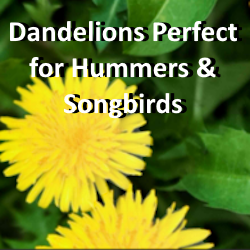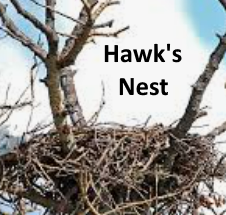Dandelion Guide: Must-Have Perennial Hummer Nectar & Songbird Seeds

Why Dandelion (Taraxacum officinale) Is Valued by Birds and Gardeners Alike
Dandelion (Taraxacum officinale) is often dismissed as a mere weed by many, but this perception overlooks its significant ecological and horticultural benefits. Revered for its nutritional value and medicinal properties, the humble dandelion also plays a crucial role in the survival and thriving of various wildlife, particularly hummers and songbirds. This article explores why dandelions are favored by these birds, their growing conditions, and the broader impact on the ecosystem.
Habitat and Growing Conditions
Dandelions are incredibly adaptable and can be found worldwide, thriving in USDA hardiness zones 3-10. This broad adaptability makes them a common sight in meadows, lawns, and even cracks in sidewalks. Preferring sunny spots, they can also tolerate partial shade. Dandelions are perennial plants, returning year after year to grace landscapes with their sunny yellow blooms.
The plants typically grow to about 6 to 12 inches in height. When planting dandelions intentionally, spacing them about 6 to 12 inches apart allows sufficient room for growth. This spacing helps in avoiding overcrowding and ensures each plant receives adequate nutrients and sunlight.
Flowering and Its Phases
Dandelions flower from early spring to late fall, providing a long season of engagement for birdwatchers and nature enthusiasts. The flowering phase is crucial as it produces the seeds that attract a variety of birds and insects. The flowers themselves are composite, meaning they are made up of hundreds of smaller florets, each capable of pollination and seed production.
Attraction to Hummers and Songbirds
The main reason dandelions are so attractive to both hummers and songbirds lies in their seeds and the nectar. Songbirds like goldfinches and sparrows are particularly fond of the seeds. These small birds find the seeds an easy meal packed with nutrition, especially in late spring when other food sources might not be as plentiful.
Hummingbirds, on the other hand, may not directly consume the seeds but are drawn to the nectar during the flowering season. Dandelions are among the early spring flowers that provide essential nectar to these tiny birds as they return from migration or begin their breeding season.
Ecological Impact on Insects and Other Wildlife
In addition to providing food for birds, dandelions are a significant source of nourishment for various insects, including bees, butterflies, and beetles. These insects are attracted to the bright yellow flowers and the nectar and pollen they offer. By serving as a food source for these pollinators, dandelions play an integral role in the local ecosystem, promoting biodiversity and supporting the life cycles of various animals.
Cultivation Tips
For those interested in cultivating dandelions, it’s fortunate that they require minimal care. They are drought-resistant and can typically grow in poor soil conditions where other plants might struggle. However, for optimal growth and minimal spreading, providing occasional watering during extremely dry periods and situating them in well-drained soil can help maintain a more controlled growth.
Conclusion
Far from being just a garden nuisance, the dandelion is a plant of remarkable utility and ecological importance. It supports a diverse range of wildlife, particularly benefiting hummers and songbirds in various ways. By cultivating dandelions, whether in a small garden space or a larger field, individuals can contribute positively to their local ecosystems, encouraging biodiversity while enjoying the simple beauty these flowers offer. The dandelion’s ability to thrive in a variety of conditions and its lengthy blooming period make it an invaluable component of any eco-friendly garden or wild space.





